#Buridan Aristotle
Text
Walter Burley one of the most prominent logicians and metaphysicians of the Middle Ages
284J Aristotle , Gualtherus Burlaeus. (Walter Burley (c. 1275–1344/5 ))
Expositio Gualteri Burlei super decem Libros Ethicorum Aristotelis (Contains the text of Robert Grosseteste’s translation of the Nicomachean Ethics)
Venice: Simon de Luere for Andreas Torresanus, 4 September 1500 $11,500
Folio, 12 1/4 X 8 1/2 in. A8 a6 b-x8 y10.
Second edition after the first of 1481.
This copy is bound…

View On WordPress
#Buridan Agent Intellect Buridan Common Sense Buridan Hylomorphism Buridan Intelligible Species Buridan Intentions Buridan Phantasms Buridan#Buridan Aristotle#Buridan Common Sense#Buridan Materialism#Medieval Psychology#thirteenth century
0 notes
Text
~Sherlock's Paradox~
...The Story of The Hungry Donkey
"I wrote my own version of the Nativity when I was a child. The Hungry Donkey. It was a bit gory. But if you’re gonna put a baby in a manger, you’re asking for trouble."

A hungry donkey enters a barn in search of hay. Much to his delight he discovers two identical haystacks, each on the opposite side of the barn. The donkey stands in the middle of the barn between the two piles of hay, not knowing which one to choose.

This short parable comes from the French logician and philosopher Jean Buridan’s commentaries on Aristotle’s Theory of Action. The moral of the story is: Not deciding has consequences.

Buridan's ass is an illustration of a paradox in philosophy in the conception of free will. It refers to a hypothetical situation wherein a donkey that is equally hungry and thirsty is placed precisely midway between a stack of hay and a pail of water. Since the paradox assumes the ass will always go to whichever is closer, it dies of both hunger and thirst since it cannot make any rational decision between the hay and water.
Should two courses be judged equal, then the will cannot break the deadlock, all it can do is to suspend judgement until the circumstances change, and the right course of action is clear. — J. Buridan

Later writers satirised this view in terms of an ass which, confronted by both food and water, must necessarily die of both hunger and thirst while pondering a decision.

...in his Ethics, Benedict de Spinoza suggests that a person who sees two options as truly equally compelling cannot be fully rational:
"It may be objected, if man does not act from free will, what will happen if the incentives to action are equally balanced, as in the case of Buridan's ass? (In reply,) I am quite ready to admit, that a man placed in the equilibrium described (namely, as perceiving nothing but hunger and thirst, a certain food and a certain drink, each equally distant from him) would die of hunger and thirst."

"A certain food and a certain drink." Sherlock's Food of Knowledge, his brother Mycroft, or his Cup of Tea, John? In this case, Sherlock did not have free will at first. He only had two choices. We all know, now, that Mycroft was trying to get Sherlock to do the opposite; to shoot him, but in a choice between his own brother, or John, Sherlock knew either way he would forever be starved. Killing himself was the ultimate choice in free will in this case. It freed all of them, and assuming EMP, this is Sherlock teaching himself that he is not controlled by his perceived cold side, and refused to see others lives as a game. Sherlock can let go.

Some popular culture References of note:
"Buridan's Ass" is the name of the sixth episode of the first season of the FX television series Fargo.
In the Doctor Who novel The Eight Doctors, the Fifth and Eighth Doctors are confronted by a Raston Warrior Robot. The Doctors stand exactly the same distance away from the Robot as it approaches them; unable to decide which to attack first (since the Robot attacks by sensing brain patterns, which are identical in the two Doctors), the Robot shuts down.
The lyrics of a song by Devo, the title track from their album Freedom of Choice, describe a similar situation: "In ancient Rome, there was a poem / About a dog who found two bones" who then, unable to choose between the two, "went in circles till he dropped dead."
In the 10th season of The Big Bang Theory, Sheldon and Amy discuss the history of Buridan's ass (renamed donkey), and its application to their lives. Amy resolves the paradox (of Sheldon desiring to live in different apartments) by creating a more desirable option by engaging Sheldon in a discussion of the theory and its history. Source
@may-shepard @isitandwonder @love-in-mind-palace @darlingtonsubstitution @gosherlocked @loveismyrevolution @let-bijohns-be-bi-johns @sarahthecoat Inspired by comments from @monikakrasnorada redbeard
#The Hungry Donkey#A Parable on choice#Sherlock's Paradox meta#Food or Drink#Moriarty's Game#Buridan's Ass#Aristotle#TFP
237 notes
·
View notes
Text
In order to understand the enormous extent to which such theories grew during the Middle Ages some basic formal features of the scholastic organization of knowledge has to be kept in mind. First, scholastic learning is essentially a commentary tradition. Most of the writings either are explicit commentaries on what at a time were taken to be canonical texts (as e.g., the works of Aristotle, the Sentences of Peter Lombard, the Grammar of Priscian, or the Summulae Logicales of Peter of Spain or Buridan) or are at least composed with constant reference to the topics treated there. A second point, closely related to the first, is the common scholastic practice of putting great effort into the conceptual analysis of the basic terms and notions. … Both points combined resulted in a general tendency towards an increasing complexity and refinement of the scholastic discourse.
Stephan Meier-Oeser, Stanford Encyclopedia of Philosophy article “Medieval Semiotics”
This same scientific spirit has been equally misunderstood as it is found in the schoolmen. ... The thoroughness I allude to consists in this, that in adopting any theory, they go about everywhere, they devote their whole energies and lives in putting it to tests bona fide -- not such as shall merely add a new spangle to the glitter of their proofs but such as shall really go toward satisfying their restless insatiable impulse to put their opinions to the test. Having a theory, they must apply it to every subject and to every branch of every subject to see whether it produces a result in accordance with the only criteria they were able to apply -- the truth of the Catholic faith and the teaching of the Prince of Philosophers.
Mr. George Henry Lewes in his work on Aristotle seems to me to have come pretty near to stating the true cause of the success of modern science when he has said that it was verification. I should express it in this way: modern students of science have been successful because they have spent their lives not in their libraries and museums but in their laboratories and in the field; and while in their laboratories and in the field they have been not gazing on nature with a vacant eye, that is, in passive perception unassisted by thought, but have been observing -- that is, perceiving by the aid of analysis -- and testing suggestions of theories. The cause of their success has been that the motive which has carried them to the laboratory and the field has been a craving to know how things really were, and an interest in finding out whether or not general propositions actually held good -- which has overbalanced all prejudice, all vanity, and all passion. Now it is plainly not an essential part of this method in general that the tests were made by the observation of natural objects. For the immense progress which modern mathematics has made is also to be explained by the same intense interest in testing general propositions by particular cases -- only the tests were applied by means of particular demonstrations. This is observation, still, for as the great mathematician Gauss has declared -- algebra is a science of the eye, only it is observation of artificial objects and of a highly recondite character. Now this same unwearied interest in testing general propositions is what produced those long rows of folios of the schoolmen, and if the test which they employed is of only limited validity so that they could not unhampered go on indefinitely to further discoveries, yet the spirit, which is the most essential thing -- the motive, was nearly the same. And how different this spirit is from that of the major part, though not all, of modern philosophers -- even of those who have called themselves empirical, no man who is actuated by it can fail to perceive.
C.S. Peirce, CP 1.33-34
The Middle Ages were haunted with the desire to rationalise the infinite: the men of the eighteenth century rationalised the social life of modern communities, and based their sociological theories on an appeal to the facts of nature. The earlier period was the age of faith, based upon reason. In the later period, they let sleeping dogs lie: it was the age of reason, based upon faith. To illustrate my meaning:--St. Anselm would have been distressed if he had failed to find a convincing argument for the existence of God, and on this argument he based his edifice of faith, whereas Hume based his Dissertation on the Natural History of Religion upon his faith in the order of nature. In comparing these epochs it is well to remember that reason can err, and that faith may be misplaced.
Alfred North Whitehead, Science and the Modern World
12 notes
·
View notes
Quote
There is another imaginative idea in Anaximander's cosmology [that] is remarkable more for its sophistication than for its apparent eccentricity. He did not think that the earth needed any sort of cushion – either of water or of anything else – to support it. He held that it rested at the centre of a spherical universe, with everything else circling around it, and that it is this pivotal position [that] explains why it does not fall through space. It is kept in place by equilibrium, as Aristotle explained (describing Anaximander's view, not his own):
'For it behoves that which is established at the centre, and is equally related to the extremes, not to be borne one whit more either up or down or to the sides, and it is impossible for it to move simultaneously only in opposite directions, so that it stays fixed by necessity.'
Thus the earth is like Buridan's proverbial ass, which, placed exactly the same distance between two bales of hay, could not decide which one to eat and so starved to death in the middle. This idea of Anaximander's is an advanced one in several respects (for our purposes it does not matter that it is also quite wrong, not least in its premise that the earth is at the centre of things). First of all, it is pleasingly mathematical. Like a trapeze artist who jumps into empty space, confident that his partner will swing over to catch him, Anaximander bravely stepped beyond the realm of material support and trusted in a mathematical idea to catch the earth. We do not yet have here laws of motion in the style of Galileo or Newton, which kept objects on their steady courses in a way that can be the subject of detailed calculation. But we do have a universal principle, mathematical insofar as it cites the equal distance from the earth to the edges of the universe, which is used to explain something fundamental. Like his indeterminate 'apeiron', Anaximander's principle of equilibrium is invisible and impersonal, and yet it is as powerful as one of the gods. This idea was a bit too novel for other naturalists, who quickly gave back the earth its material cushion to sit on.
The Dream of Reason: A History of Philosophy from the Greeks to the Renaissance
2 notes
·
View notes
Text
[4.17.1] John Buridan on Logic as a Science
[4.17.1] John Buridan on Logic as a Science
John Buridan (Jean Buridan 1301-1358) in Quaestiones in Porphyrii Isagogen and Summulae de Dialectica writes about the place of logic in the realm of sciences:
Science in a broader sense has theoretical and practical subjects (see also Aristotle’s categorization [1.3.10]).Buridan sustains that – contrary to other contemporary opinions – logic is not the “science of sciences” because metaphysics…

View On WordPress
0 notes
Text
Tinkering with Science
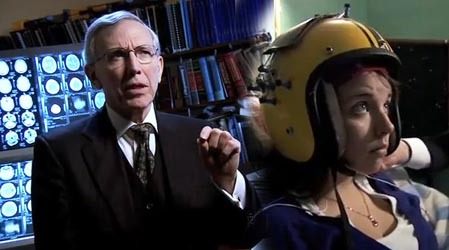
In Tinkering with the Mind I explored the possibility of general artificial intelligence (GAI) or machine consciousness coming about as the result not of a scientific research program, but rather as a result of tinkering with computers. The distinction may sound like hair-splitting, but it is an important distinction: in the one case, we know what we are doing, in the other case, we do not. How we come to artificially produce some phenomenon will bear upon what use we are able to make of GAI and who will be able to exploit this post-scientific technology.
While GAI and artificial consciousness strike me as the most important area of technology in which a post-scientific technology could emerge from scientifically-informed tinkering, this isn’t the only possibility. Another technology that has eluded us so far is fusion power that returns more energy than is consumed by producing the fusion reaction (i.e., better than breakeven fusion). It is possible that someone tinkering with fusion technologies might be able to make the breakthrough to better than breakeven fusion, though I think this is much less likely than in the case of machine consciousness, because our scientific understanding of atomic physics is fairly sophisticated, while our scientific understanding of consciousness is close to nil.
If our existing levels of knowledge (or lack of knowledge) are correlated with the likelihood of understanding a technology scientifically, in contradistinction to arriving at a technology through tinkering, then the most likely areas for a post-scientific technology will correspond to the greatest deficits in our knowledge. Areas of knowledge that touch on human consciousness are obvious candidates. For example, the so-called “God helmet” (also known as the “Koren helmet” built by Stanley Koren and Michael Persinger) has been claimed to produce religious experiences; it has also been dismissed as a placebo effect. However, we can fairly say that the realm of religious experiences are poorly understood by science, so that a technology like the Koren helmet could be considered an example of post-scientific technology (if it does what it claims to do).
If we take a step back from the specific issue of GAI and machine consciousness, or even from fusion and the Koren helmet, and look at the difference between science and tinkering at a larger scale, we face an uncomfortable meta-problem: we don’t actually understand how or why science works. The bitter truth we must swallow is that scientific progress has been, at least in part, a matter of tinkering with science itself. The scientific method has been practiced and interpreted in different ways by different researchers, and some have even claimed that there is no such thing as the scientific method.
Another way to frame this problem is that there is no science of science. Or rather, there is a study of science, but the study of science is not itself a science, but rather it is philosophy of science. And philosophy of science cannot even agree on something as fundamental as the philosophical logic that underlies (or ought to underlie) scientific practice: some contend that science is inductive, while others argue that science is deductive. As a consequence of fundamental divergence in the conception of scientific method, if we want to improve scientific method, we have no scientific results to which we can refer. We have to tinker with science, although we don’t tinker blindly with science; we tinker with the philosophical presuppositions of science which we understand on the basis of a philosophical conception of science (whether acknowledged or passed over in silence).
We should not be surprised by this, because science itself is an outgrowth of philosophy. The scientific revolution occurred within western civilization because the peculiar history of philosophy in western civilization took a different path than philosophy in other civilizations. Arguably, philosophy was even more diverse in other regional civilizations -- India, for example, has an especially prolific philosophical tradition -- but it wasn’t the sheer volume of philosophical speculation that resulted in the emergence of methodological naturalism, but the nature and quality of the speculation.
While the other civilizations of the ancient world produced moral philosophies during the Axial Age, the Greeks produced natural philosophy. Western philosophy turned aside from the tradition of natural philosophy many times over in its history, but the problems of natural philosophy insistently returned, because the founding presuppositions of Greek philosophy had the problems of natural philosophy built into the conceptual framework. These problems could be avoided, but not permanently excluded.
While we rightly focus on the actual science of the early scientific revolution in the work of Copernicus, Galileo, Kepler, and others, this work did not appear ex nihilio. Many late scholastic philosophers like Jean Buridan and William of Conches were working on problems in natural philosophy, though their work took the form of commentaries on Aristotle, as was the scholastic tradition. The early scientists of the scientific revolution were more often than not well-versed in late medieval scholastic philosophy, and saw themselves as working on the same problems, albeit by a different method.
Once modern science took off, it was busy harvesting the low-hanging fruit of empirical science. At some point, the low-hanging fruit of science will be mostly exhausted, and in order to dig more deeply we will have to return to the philosophical roots of science. There are some hints that this is occurring now, but there is still a lot of hostility and misunderstanding between philosophers and scientists.
This historical situation is somewhat parallel to the social and economic problems posed by industrialization. Once industrialization became a force in its own right, transforming entire societies, industrialization has pushed forward to harvest the low-hanging fruits of economic development, and those involved in the process have reaped the economic rewards of this. But eventually, and indeed in the advanced industrialized world now, industrialization yields diminishing returns, and in order to further pursue this development we will have to return to the cluster of ideas examined in the earliest stages of the industrial revolution, thinking through these difficult problems on first principles.
It would be a great historical irony if the way forward for future industrialization were to emerge from a post-scientific technology (like GAI emergent from technological tinkering), given that the greatest economic gains of industrialization derived from the systematic application of science to problems of industry. Arguably, the earliest innovations of the industrial revolution -- Watt’s steam engine and early blast furnaces -- were the result of tinkering, but the most dramatic gains of the industrial revolution were from the application of science. It was only after steam engines began to make their influence felt that Sadi Carnot wrote his theoretical treatise on ideal steam engines, Réflexions sur la puissance motrice du feu et sur les machines propres à développer cette puissance, but once science was brought to bear on the problems of steam engines, things really took off.
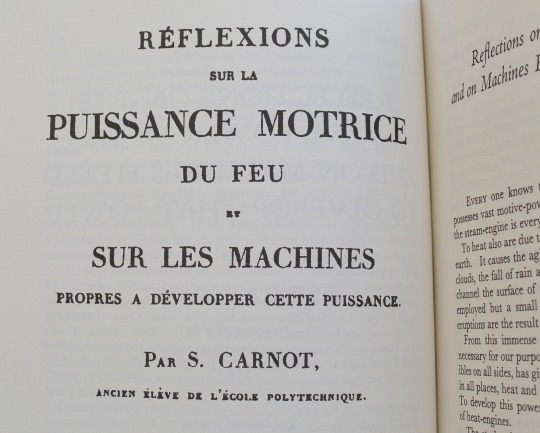
#science#philosophy of science#tinkering#natural philosophy#scientific method#industrial revolution#post-scientific technology
2 notes
·
View notes
Photo
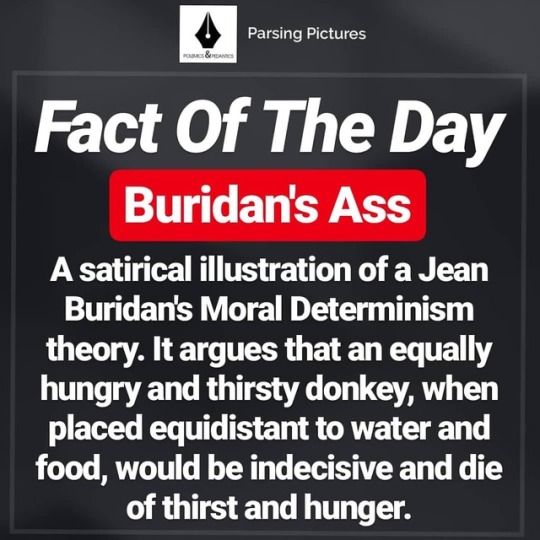
In 14th Century, philosopher Jean Buridan spoke about the theory of moral determinism. Building on the work of Aristotle, and Middle Eastern philosopher Al-Ghazali, Buridan's Ass shares a lot with their thought experiments. Aristotle spoke of the indecision arising in a person who was equally hungry and thirsty, while Al-Ghazali spoke of a person trying to decide between equally good dates. Let us know what you think about our fact of the day! #philosophy #philosophymemes #aristotle #aristoteles #thoughts #experiments #thoughtexperiment #think #ideas https://www.instagram.com/p/BvyJawmhZ7A/?utm_source=ig_tumblr_share&igshid=1ebiqiydmu4oq
#philosophy#philosophymemes#aristotle#aristoteles#thoughts#experiments#thoughtexperiment#think#ideas
0 notes
Text
Abu'l-Barakāt al-Baghdādī
Abu'l-Barakāt Hibat Allah ibn Malkā al-Baghdādī c. 1080 – 1164 or 1165 CE) was an Islamic philosopher and physician of Jewish-Arab descent from Baghdad, Iraq. Abu'l-Barakāt, an older contemporary of Maimonides, was originally known by his Hebrew birth name Nathanel before his conversion from Judaism to Islam towards the end of his life.[1]His writings include the anti-Aristotelian philosophical work Kitāb al-Muʿtabar ("The Book of What Has Been Established by Personal Reflection"); a philosophical commentary on the Kohelet; and the treatise "On the Reason Why the Stars Are Visible at Night and Hidden in Daytime". Abu'l-Barakāt was an Aristotelian philosopher who in many respects followed Ibn Sina, but also developed his own ideas.[2] He proposed an explanation of the acceleration of falling bodies by the accumulation of successive increments of power with successive increments of velocity. His thought influenced the Illuminationist school of classical Islamic philosophy, the medieval Jewish philosopher Ibn Kammuna,[3] and the medieval Christian philosophers Jean Buridan and Albert of Saxony
Life
Abu'l-Barakāt, famed as Awḥad al-Zamān (Unique One of his Time), was born in Balad, a town on the Tigris above Mosul in modern-day Iraq. As a renowned physician, he served at the courts of the caliphs of Baghdad and the Seljuk sultans.[5]He converted to Islam in old age. Abu'l Barakat does not refer to his conversion in his writings, and the historical sources give contradictory episodes of his conversion. According to the various reports, he converted either out of "wounded pride", fear of the personal consequences of the death of Sultan Mahmud's wife while under his care as a physician or fear of execution when he was taken prisoner in a battle between the armies of the caliph and that of the sultan. Ayala Eliyahu argues that the conversion was "probably motivated by convenience reasons".[6][7][8][9]Isaac, the son of the Abraham Ibn Ezra and the son-in-law of Judah Halevi,[9] was one of his pupils,[6] to whom Abu'l-Barakāt, Jewish at the time, dictated a long philosophical commentary on Ecclesiastes, written in Arabic using Hebrew aleph bet. Isaac wrote a poem in his honour as introduction to this work.[5]
Philosophy
Experimental method
Al-Baghdaadi described an early scientific method emphasizing repeated experimentation, influenced by Ibn Sina, as follows:[10]
"Because of the frequency of the experience, these judgements may be regarded as certain, even without our knowing the reason [for the phenomenon]. For there is certain knowledge that the effect in question is not due to chance. It must accordingly be supposed that it is due to nature or to some modality thereof. Thus the cause qua cause, though not its species or mode of operation, is known. For experimental science is also constituted by a knowledge of the cause and by an induction based on all the data of sensation; whereby a general science is reached. ... But in the cases in which an experiment has not been completed, because of its not having been repeated in such a way that the persons, the time and the circumstances varied in everything that did not cause the determining cause, whereas this cause [remained invariable], the experiment does not prove certain knowledge, but only probably opinion."
Motion
According to Alistair Cameron Crombie, al-Baghdaadi was a follower of the scientific and philosophical teachings of Ibn Sina.
proposed an explanation of the acceleration of falling bodies by the accumulation of successive increments of power with successive increments of velocity.[11]
According to Shlomo Pines, al-Baghdaadi's theory of motion was thus
the oldest negation of Aristotle's fundamental dynamic law [namely, that a constant force produces a uniform motion], [and is thus an] anticipation in a vague fashion of the fundamental law of classical mechanics [namely, that a force applied continuously produces acceleration].[12]
Al-Baghdaadi's theory of motion distinguished between velocity and acceleration and showed that force is proportional to acceleration rather than velocity.[4][13] The 14th-century philosophers Jean Buridan and Albert of Saxony later refer to Abu'l-Barakat in explaining that the acceleration of a falling body is a result of its increasing impetus. Abu'l-Barakat also modified Ibn Sina's theory of projectile motion, and stated that the mover imparts a violent inclination (mayl qasri) on the moved and that this diminishes as the moving object distances itself from the mover.[4]Al-Baghdaadi also suggested that motion is relative, writing that "there is motion only if the relative positions of the bodies in question change." He also stated that "each type of body has a characteristic velocity that reaches its maximum when its motion encounters no resistance."[3]
Space and Time
Al-Baghdaadi criticized Aristotle's concept of time as "the measure of motion" and instead redefines the concept with his own definition of time as "the measure of being", thus distinguishing between space and time, and reclassifying time as a metaphysical concept rather than a physical one. The scholar Y. Tzvi Langermann writes:[3]
Dissatisfied with the regnant approach, which treated time as an accident of the cosmos, al-Baghdadi drew the conclusion that time is an entity whose conception (ma'qul al-zaman) is a priori and almost as general as that of being, encompassing the sensible and the non-sensible, that which moves and that which is at rest. Our idea of time results not from abstraction, stripping accidents from perceived objects, but from a mental representation based on an innate idea. Al-Baghdadi stops short of offering a precise definition of time, stating only that 'were it to be said that time is the measure of being (miqdar al-wujud), that would be better than saying [as Aristotle does] that it is the measure of motion'. His reclassification of time as a subject for metaphysics rather than for physics represents a major conceptual shift, not a mere formalistic correction. It also breaks the traditional linkage between time and space. Concerning space, al-Baghdadi held unconventional views as well, but he did not remove its investigation from the domain of physics.
In his view, there is just one time which is similar for all beings, including God. Abu'l-Barakāt also regarded space as three-dimensional and infinite.[14]
Psychology
He upheld the unity of the soul, denying that there is a distinction between it and the intellect.[14] For him, the soul's awareness of itself is the definitive proof that the soul is independent of the body and will not perish with it.[2] On his contributions to Islamic psychology, Langermann writes:[3]
Al-Baghdadi's most significant departure in psychology concerns human self-awareness. Ibn Sina had raised the issue of our consciousness of our own psychic activities, but he had not fully pursued the implications for Aristotelian psychology of his approach. Al-Baghdadi took the matter much further, dispensing with the traditional psychological faculties and pressing his investigations in the direction of what we would call the unconscious.
Works
He wrote a critique of Aristotelian philosophy and Aristotelian physics entitled Kitab al-Mu'tabar (the title may be translated as "The Book of What Has Been Established by Personal Reflection"). According to Abu'l-Barakāt, Kitāb al-Muʿtabar consists in the main of critical remarks jotted down by him over the years while reading philosophical text, and published at the insistence of his friends, in the form of a philosophical work. The work "presented a serious philosophical alternative to, and criticism of, Ibn Sina".[15] He also developed concepts which resemble several modern theories in physics.[3]Abu'l-Barakāt also wrote a short treatise on the intellect, Kitāb Ṣaḥiḥ adillat al-naql fī māhiyyat al-ʻaql (صحيح أدلة النقل في ماهية العقل), which has been edited by Ahmad El-Tayeb.[16]All that we possess in the way of medical writing by Abu'l-Barakāt are a few prescriptions for remedies. These remain in manuscript and are as yet unstudied.[17]
Legacy
Abu'l-Barakāt's thought had a deep influence on Islamic philosophy but none on Jewish thought. His works were not translated into Hebrew,[14] and he is seldom cited in Jewish philosophy, probably because of his conversion to Islam.[7]
The famous theologian and philosopher Fakhr al-Din al-Razi was one of Abu'l-Barakāt's eminent disciples. The influence of Al-Baghdadi’s views appears especially in Al-Razi’s chief work Al-Mabāḥith al-Mashriqiyyah (Oriental Discourses). Abu'l-Barakāt influenced certain conceptions of Suhrawardi.[18].[4]
#Seljuk#Judah Halevi#Jean Buridan#Islamic philosophy#Islam#Iraq#Baghdad#Abu'l-Barakāt al-Baghdādī#Abraham Ibn Ezra
0 notes
Text
Walter Burley
284J Aristotle , Gualtherus Burlaeus. (Walter Burley (c. 1275–1344/5 ))
Expositio Gualteri Burlei super decem Libros Ethicorum Aristotelis (Contains the text of Robert Grosseteste’s translation of the Nicomachean Ethics)
Venice: Simon de Luere for Andreas Torresanus, 4 September 1500 $11,500
Folio, 12 1/4 X 8 1/2 in. A8 a6 b-x8 y10.
Second edition after the first of 1481.
This copy is bound…

View On WordPress
#Buridan Agent Intellect Buridan Common Sense Buridan Hylomorphism Buridan Intelligible Species Buridan Intentions Buridan Phantasms Buridan#Buridan Aristotle#Buridan Common Sense#Buridan Materialism#Medieval Psychology#thirteenth century
0 notes
Text
Buridan's Ass
Buridan's Ass--the name given to a paradox: that a hungry and thirsty ass placed exactly in the middle between water and hay will be unable to choose because neither choice is preferable or closer; he will therefore die of thirst and hunger. Indecision is a terrible thing.

Situations like Buridan’s Ass arise in digital electronics when inputs to a system are equal and the system is suspended in an equilibrium state, unable to produce an output. The condition is known as “metastability.”

Word origin: The paradox is named for Jean Buridan (c.1300-c.1361), who studied and taught at the University of Paris, but the paradox was not original to him. Aristotle used a version of the paradox in his De Caelo (On the Heavens) "a man, being just as hungry as thirsty, and placed in between food and drink, must necessarily remain where he is and starve to death."
More:
Indecision
Metastability
19 notes
·
View notes
Text
Aristotle
Aristotle was a Greek philosopher during the Classical period in Ancient Greece, the founder of the Lyceum and the Peripatetic school of philosophy and Aristotelian tradition.
Along with his teacher Plato, he has been called the "Father of Western Philosophy". His writings cover many subjects – including physics, biology, zoology, metaphysics, logic, ethics, aesthetics, poetry, theatre, music, rhetoric, psychology, linguistics, economics, politics and government.
Aristotle provided a complex synthesis of the various philosophies existing prior to him, and it was above all from his teachings that the West inherited its intellectual lexicon, as well as problems and methods of inquiry.
As a result, his philosophy has exerted a unique influence on almost every form of knowledge in the West and it continues to be a subject of contemporary philosophical discussion. Little is known about his life. Aristotle was born in the city of Stagira in Northern Greece.
His father, Nicomachus, died when Aristotle was a child, and he was brought up by a guardian. At seventeen or eighteen years of age, he joined Plato's Academy in Athens and remained there until the age of thirty-seven (c. 347 BC).[4] Shortly after Plato died, Aristotle left Athens and, at the request of Philip II of Macedon, tutored Alexander the Great beginning in 343 BC.
He established a library in the Lyceum which helped him to produce many of his hundreds of books on papyrus scrolls. Though Aristotle wrote many elegant treatises and dialogues for publication, only around a third of his original output has survived, none of it intended for publication.
The fact that Aristotle was a pupil of Plato contributed to his former views of Platonism, but, following Plato's death, Aristotle developed an increased interest in natural sciences and adopted the position of immanent realism. Aristotle's views on physical science profoundly shaped medieval scholarship.
Their influence extended from Late Antiquity and the Early Middle Ages into the Renaissance, and were not replaced systematically until the Enlightenment and theories such as classical mechanics. Some of Aristotle's zoological observations found in his biology, such as on the hectocotyl (reproductive) arm of the octopus, were disbelieved until the 19th century. His works contain the earliest known formal study of logic, studied by medieval scholars such as Peter Abelard and John Buridan.
Aristotle's influence on logic also continued well into the 19th century. He influenced Islamic thought during the Middle Ages, as well as Christian theology, especially the Neoplatonism of the Early Church and the scholastic tradition of the Catholic Church. Aristotle was revered among medieval Muslim scholars as "The First Teacher" and among medieval Christians like Thomas Aquinas as simply "The Philosopher". His ethics, though always influential, gained renewed interest with the modern advent of virtue ethics, such as in the thinking of Alasdair MacIntyre and Philippa Foot.
Join the Illuminati https://www.howtojoinilluminati.co.za/
Illuminati symbols https://www.howtojoinilluminati.co.za/symbols-signs-illuminati.html
History of the Illuminati https://www.howtojoinilluminati.co.za/history-of-illuminati.html
0 notes
Photo
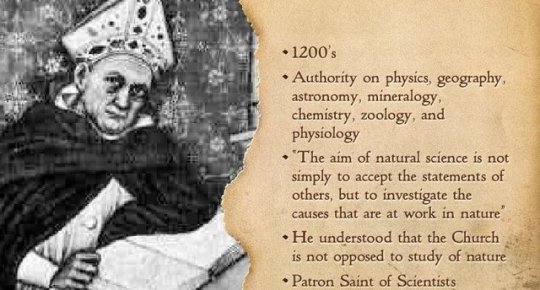
Catholic Physics - Reflections of a Catholic Scientist - Part 101 - Truth Cannot Contradict Truth - Part 10
With Images:
https://www.linkedin.com/pulse/catholic-physics-reflections-scientist-part-101-truth-harold-baines-5f/?published=t
SCIENCE BACKGROUND - PART 1
Lakatos “Scientific Research Programme” - black arrows indicate direction of foundation information flow; red arrows indicate direction of feedback information flow. - (Diagram made by RJK) - [Caption for linked image]
“To develop a complete mind: Study the art of science; study the science of art. Learn how to see. Realize that everything connects to everything else” — Leonardo DaVinci
SECTION 1: Elements of the Physics of Motion
1.1 INTRODUCTION
This section is for those students who don’t remember (or perhaps never were taught) elementary physics. I hope to give some qualitative notions of some basic concepts in physics and to do so with a minimum of mathematics, using pictures, animations and links to available explanations on the web. So, dear reader, imagine you’re living in pre-Renaissance Europe, and are listening to those Medieval monks explain what they think about motion, and how it differs from what Aristotle had to say.
1.2 DISTANCE, VELOCITY, ACCELERATION
First, let’s consider distance. I believe all you readers have an intuitive notion of what distance is: you draw a straight line between point A and point B and the length of that line is the distance between points A and B.¹
What is velocity, then? Velocity is a rate, distance per time. (And, to be fussy, velocity has direction; “speed” is the magnitude of velocity; you don’t care what the direction is; velocity is “speed” plus direction.)
Now I ask your pardon, dear reader to bear with me while I inject just a little math to make the concept clear. Suppose it’s four miles to the nearest rest stop on the thruway and you must get there in five minutes (or less–I won’t ask why. How fast do you have to travel or what should your car’s velocity be? Your rate of travel, speed, must be four miles in five minutes, or 4miles/ 5 minutes, or as it would be written conventionally, 4/5 miles/minute; in other words, distance divided by time. Since there are 60 minutes in an hour, a little arithmetic shows you would have to travel 60x (4/5) miles/hour or 48 mph². And here’s an equation (again, pardon)
v= d/t where v is velocity, d is distance and t is time to travel that distance
What is acceleration? It’s also a rate, the change in velocity divided by the corresponding change in time. Let’s turn again to an example with some numbers. Fresh out of grad school I bought a MG TD (red, no less!). The MG was not, to use my grandson’s lingo, “zippy.” From a standing start, it could get to a speed of 42 mph in about 20 seconds (real sports cars take only about 5 seconds to get to 60 mph). This acceleration rate corresponds happily (for nice numbers) to about 1 (m/s)/s or 1 m/s². So we have acceleration, a, given by the gain in velocity over the time, t, it takes to achieve that change:
a = (change in v) / t
Here’s an illustration to give you some notion of what acceleration and velocity look like. It’s the MG TD performing as above, going from 0 to 42 mph in 20 s and thereafter at the constant speed of 42 mph. The shots correspond to 4 s intervals from 8s to 28 s. (Caption for linked image below)
Velocities at 4 second intervals from 8s to 28 s. Acceleration is 1 m/s^2, to get to 42 mph in 20 s. Acceleration ceases at 20 seconds, so velocity is constant from 20 seconds to 28 seconds; the speed is listed above each car image; the arrow length corresponds (roughly) to the velocity:
An easy way to think about constant acceleration is that the distance covered in a given time is average velocity multiplied by the time. The average velocity is just (1/2) (v_beginning + v_end).³
As pointed out in ESSAY 1, SECTION 3.2, Nicolas Oresme had derived these relations between velocity, distance and acceleration by a graphical analysis, 100 years before Galileo. However, it was Galileo who did the science: confirmed the theory by experiment.
Inclined Plane used by Galileo to measure relation between distance, velocity and acceleration (Caption for linked image)
How did Galileo set up an experiment where the motion would be slow enough for him to measure time, distances and speed? Acceleration of falling bodies would be too fast. Here’s the experiment, done in elementary physics lab classes. An inclined plane, as in the illustration below, length L, is set up so that the top end of the plane is a height h above the ground. A ball or cylinder rolls down the plane and you measure distance traveled in given times. Now if the plane were to be vertical (h=L), the ball would fall with an acceleration that of gravity (9.8 m/s²) and that would be too fast. If the plane is flat (h=0), the ball would not roll at all (hey! that’s poetry?). Clearly the acceleration is going to vary as the height h changes. It turns out that the acceleration is proportional to h/L. It will be the same–independent of size or material–for a given shape sliding or rolling down the plane.
1.3 MOMENTUM
How do objects acquire velocity, that is accelerate? Buridan in the 14th Century had ideas about velocity that anticipated Galileo and Newton centuries later. He said that a moving body had “impetus,” the heavier the body moving at a given velocity, the more impetus it had. If you threw a ball, the motion of your arm gave the ball its impetus. “Impetus” is what we now call “momentum” and define as
momentum = mass x velocity
Mass is what we ordinarily think of as weight, but to be fussy, weight is really mass times the force of gravity. You can think of mass as resistance to change in motion, what would technically be termed “inertia.”
Here’s an example to give you some intuitive notion about momentum: the MG TD referred to above is a very light car, weighing only about 1/2 ton (1000 pounds); a late model Cadillac is much heavier, weighing about two tons. Accordingly, the mass of the Caddy is about four times greater than that of the MG. So, if the MG were traveling at 40 mph and the Caddy at (1/4)x 40 mph = 10 mph, they would have equal momentum (if they were traveling in the same direction–remember, velocity has direction, speed does not). This is illustrated below.
Caddy (top) is moving 1/4 as fast as MG(below) but has 4 times the mass; so the momentum of the Caddy and the MG are the same. (Caption for linked image)
1.4 FORCE
What causes a body to accelerate, acquire velocity? Again, Buridan had the right qualitative notion: the body acquired impetus because of an action by an agent, you, throwing the ball with your arm. In this notion there is an implied notion of force, which Newton (17th century) made explicit by his Second Law of Motion:
Force = mass x acceleration
more generally if mass doesn’t stay constant (think of an example involving liquids!)
Force = change of momentum/change of time
For the first definition, go back to the example of the accelerating MG: the force is provided by friction between the tires and the road, the tires— wheels — are made to go round by the engine turning a drive-shaft.
For the second definition, think of a pitcher winding up and releasing a baseball moving at 90 mph as depicted in this video . The baseball has a mass of about 0.15 kg (or about 0.3 lbs) If you go frame by frame in the video, you’ll see that it takes less than 10 ms (0.01 s) for the pitcher to start his windup and release the ball; that’s the change in time for the baseball to acquire its velocity of 90 mph (we’ll neglect air friction slowing the ball down). So, fussing with units — I don’t need for you all to mess with the arithmetic — you get a force of about 650 Newtons required.
For comparison, the force of gravity on the baseball is about 1.5 Newtons. If air friction is neglected, from what height would the ball have to fall to get this 90 mph velocity? About 100 yards. Why the greater force to throw the ball this fast? Because the force of the throw is acting for only a short period of time, during the pitcher’s windup, whereas gravity will be acting all during the fall.
1.5 KINDS OF ENERGY; CONSERVATION OF ENERGY
There are two other physics concepts, as important as velocity, acceleration and force, that bear on motion, and those are energy and work. I’ll talk about “Work” in Section 2, below, but here are some ideas about the different kinds of energy. To get an intuitive idea of this, let’s go into more detail about how the MG acquires velocity.
First, fuel is burnt in the cylinders to move the pistons up and down and thereby rotate the shaft that turns the rear wheels around, moving them against the friction of the road. We have then chemical energy from the gasoline combining with oxygen (burning) converted to mechanical energy. The energy of motion is called “kinetic energy” and is given by the formula
Kinetic Energy = (1/2) mass x velocity^2 (the “^2” means “squared”)
Another important form of energy is “potential energy,” energy a body has by virtue of its position. Let’s think about what this means. When you let a ball roll down an inclined plane it has zero kinetic energy at the top and kinetic energy at the bottom after it’s accelerated due to gravity and acquired velocity. So where does that kinetic energy come from? To balance the energy books we say the ball at the top of the plane has potential energy that can be converted to kinetic energy. This potential energy is given (for gravity at the surface of the earth) by
Potential Energy = mass x g x h= mgh
where g is the acceleration due to gravity (9.8 m/s^2), h is the height above the bottom
This is illustrated below: (Caption for linked image)
Potential Energy Changed to Kinetic Energy as Ball Rolls down the Inclined Plane.
An important principle of physics is that energy is conserved. What does that mean? It means that energy doesn’t disappear into nowhere, for example:
kinetic energy, energy of motion is lost due to friction, but is converted to the same amount of heat energy;
kinetic energy, energy of motion is lost due to work done, moving the MG up a hill–the work done is equal to the amount of kinetic energy lost; the work done is equal to the gain in potential energy at the end;
chemical energy of the gasoline is converted to kinetic energy less friction losses in the engine and drive shaft.
Accordingly, the energy bank account balances: input (at the beginning) of chemical energy, gasoline in the fuel tank = kinetic energy at the end of the drive, when the fuel tank is empty + energy lost due to friction of the tires with the road, engine and drive shaft friction + work done due to a net change in height level at the end or gain in potential energy.
In SECTION 2, I’ll have more to say about the science of energy, “Thermodynamics,” particularly these two important laws: The First and Second Laws of Thermodynamics.
1.6 NOTES
¹Let me add a cautionary note physicswise: if you are traveling between A and B (home and the local fastfood place, let’s say) and you wander around, make side-trips, the distance is still the length of the line between beginning and ending points. If you want to get total mileage traveled, then you have to draw straight lines between each of the intermediate starting and stopping points and add the lengths up.
² Since each hour contains 60 minutes, you would have to go 60 (minutes/hour) x (4/5) (miles/minute) or 60 x (4/5) (miles/hour)= 48 (miles/hour).
³For our example, the distance covered by the accelerating MG between 12 seconds (v_beginning = 25 mph) and 16 seconds (v_end=33mph) is just
(1/2) (25+33) (miles/hour) x(1 hour/ (3600 seconds) x (16-12) seconds or about 56 yards
SECTION 2: Thermodynamics, the Science of Energy
“It looks full of hard words and signs and numbers, not very entertaining or understandable looking, and I wonder whether it will make people wiser or better.’ So wrote a cousin of Josiah Willard Gibbs when she happened onto a copy of his most famous paper on thermodynamics lying on his desk.” — As quoted from Order and Chaos, by Stanley Angrist and Loren Hepler.
Diagram of the Second Law of Thermodynamics for a Heat Engine; from Wikimedia Commons (Caption for linked image)
From the uncoiling energetics of DNA to the information lost into black holes, thermodynamics enters into every field of science. The Second Law of Thermodynamics, all about order and disorder — you can’t (realistically) unscramble eggs — is perhaps the most fundamental of those principles at the inner core of the Lakatos sphere. Einstein’s comment about thermodynamics says it all:
“A theory is the more impressive the greater the simplicity of its premises, the more different kinds of things it relates, and the more extended its area of applicability. Therefore the deep impression that classical thermodynamics made upon me. It is the only physical theory of universal content which I am convinced will never be overthrown, within the framework of applicability of its basic concepts.” — Albert Einstein (author), Paul Arthur, Schilpp (editor). Autobiographical Notes. A Centennial Edition. Open Court Publishing Company.
In this section I’ll try to explain some fundamental concepts in thermodynamics and to explore what the First and Second Laws of thermodynamics tell us about the world (and God?).
2.1 WORK
What do we mean in physics by the term “work”? It means applied force times distance moved. If you apply a force — push against a stone wall — but don’t move the wall, you may work up a sweat, but you haven’t done any work. These ideas are illustrated below. In the two diagrams below, a basket is moved up a distance d. The force applied is the weight, mg, due to gravity: F=mg; the distance moved is “d.” So the work W is given by
Work = applied force times distance moved or W = mg X d
weight (basket) before being lifted. The basket is at height h above ground.The potential energy is then mgh. (Caption for linked image)
basket after being lifted a distance d. the basket is now a height h+d above the ground and the potential energy is mg(h+d) (Caption for linked image)
In the next two diagrams the basket is moved across a table against a resisting frictional force, Fr. Again the basket moves a distance d, so the Work done on the basket is W=FrXd. (Caption for linked image)
Basket before being moved. (Caption for linked image)
Basket after being moved a distance d against a frictional force Fr. (Caption for linked image)
I should emphasize that the examples given are for “mechanical work. I also want to emphasize again that doing work is more than exerting a force. Work is force times distance force moved.
2.2 WORK, HEAT AND ENERGY
To repeat: there are many kinds of energy: for example, mechanical; electrical; magnetic, chemical, heat. All these forms of energy can be converted to work and work can be changed into these several forms of energy. (See this interesting video about conversion of different forms of energy.)
In the first example above, a basket is pulled up a distance d against the force of gravity, mg;
the work done, mgd, is converted to the increase in potential energy: before the lift the potential energy was mgh; after the lift the potential energy was mg (h+d) (the height above the ground of the basket has increased to h+d) so the difference (after – before) is just mgd.
In the second example the work done does not increase the potential energy of the basket —it’s still at the same height. Where has the energy which should have been produced by the work gone? Recall that the basket moved against a frictional force. What form of energy is produced by friction? Heat! Here again is an account of Joule’s experiment on the conversion of work to heat:
History of Thermodynamics: James Joule: Work—>Heat
Diagram of Joule’s Apparatus for Measuring the Mechanical Equivalent of Heat from Wikimedia Commons (Caption for linked image)
As the weight falls, the potential energy of the weight is converted into work done (a paddle stirs the water in the container against a frictional force due to water viscosity). The temperature rise corresponding to a given fall of weights (work done) yields the amount of heat rise (in calories) of the known mass of water.¹ Since the temperature rise is very small, the measurements have to be very accurate.
It took 30 to 50 years after Joule’s definitive experiment (and subsequent refinements and repetitions) for the kinetic theory of heat — heat caused by random, irregular motion of atoms and molecules–to be fully accepted by the scientific community. James Clerk Maxwell published in 1871 a paper, “Theory of Heat”. This comprehensive treatise and advances in thermodynamics convinced scientists finally to accept that heat was a form of energy related to the kinetic energy (the energy of motion) of the atoms and molecules in a substance.
2.3 CONSERVATION OF ENERGY — THE FIRST LAW OF THERMODYNAMICS
The conservation of mechanical energy was discussed in Section 1: the potential energy of a body a height h above the ground is equal to its kinetic energy just before it hits the ground, where the potential energy is zero. The First Law of Thermodynamics states the conservation of energy in a more general way:
ΔE = Q + W
We focus here on a “system.” The system might be a container of water, it might be the earth, or anything of interest with some boundaries that are closed (by “closed” we mean that no matter crosses the boundaries of the system). “Q” is the heat absorbed by the system; W is the work done on the system; ΔE is the change in energy of the system.²
An early statement (1850) of the First Law was given by the German physicist Rudolf Clausius:
“In all cases in which work is produced by the agency of heat, a quantity of heat is consumed which is proportional to the work done; and conversely, by the expenditure of an equal quantity of work an equal quantity of heat is produced.
Clausius also gave a definitive statement for the Second Law, but before discussing that I’d like to talk about how the Second Law developed and the concept of entropy came to be.
2.4 THE SECOND LAW: HEAT ENGINES.
One pedestal of the Industrial Revolution in the 18th and 19th Centuries was the heat engine, designed
NOTES
¹Here’s how the amount of heat transferred to the water,Q, is determined. Q is related to the temperature rise, ΔT, as follows: Q = C ΔT. C is the “heat capacity,” which is proportional to the amount of water in the apparatus and a constant, specific heat capacity, c, that depends on the substance. For liquid water at ordinary temperatures, c= 1 calorie/ (gram x degree Centigrade).or 4181 Joules/(kilogram x degree Centigrade).
²If we were to conform strictly to current usage we would use ΔU rather than ΔE, where U is the “internal energy” of the system (as distinct from kinetic energy of the system, for example). This “Internal Energy” is defined by the First Law:.the Change in U is given by Q+W, but the “zero” of U is arbitrary. For example, if you’re concerned with chemical reactions you can define a zero of U for elements in their most stable state under standard conditions (e.g. oxygen as O2, diatomic molecules, at 25 degrees Centigrade and 1 atm pressure—if oxygen were behaving as an ideal gas).But why make things more complicated than necessary? The goal of this discussion is to achieve an intuitive understanding of what thermodynamics is about, not to pass a final exam.
From a series of articles written by: Bob Kurland - a Catholic Scientist
0 notes
Text
Anti-Aristotelianism The claim in biology that there is no essential characteristic of a species. The denial of the proposition that motion is intrinsically motivated by matter (A brick falls because it wants to be at the lowest point.) Knowledge obtained from practical experience over that learned from authorities. The skeptic claim that we cannot know what the truth is. Knowledge is dependent upon mechanical principles. Natural phenomena is explained in terms of the local motion of material parts. Epistemological and methodological change. Motion does not have a conjoined moving cause. Anti-Aristotelianism can be abstractly described as a paradigm shift in the belief about how nature works, what we can know about nature, and how we can go about obtaining knowledge. Aristotelian metaphysics holds that matter moves by virtue of intrinsic conjoined motivation (a moving cause) that comes with any piece of matter, that the world of matter is imperfect "copies" of pure essences, and that our senses give us the ability to perfectly "know" true knowledge. By contrast, the anti-Aristotelian perspective, which began many centuries ago, denied that the world is divided into the perfect essences and imperfect physical copies, or that we can know with any perfection about the world. We must learn about the world by experiment - empirically testing our theories (maps). There are no "essences", and motion is the result of outside forces acting on bodies. The following quotations from various sources show the anti-Aristotelian perspective. It primarily represents the beginnings of modern, empirical, science and philosophy. While the ancient Greeks understood both the inability to know the absolute truth as well as the need for theories to agree with experience, this knowledge was essentially lost to civilization during the dark ages. The roots of anti-Aristotelianism as the foundation of modern science can be found as early as the 13th century. Review the following quotations: "In search of origins, Duhem became convinced that the source of the flourishing of anti-Aristotelian science was the decision in March 1277 by Etienne Tempier, bishop of Paris, to condemn as heretical 219 propositions. Duhem claimed that Tempier’s action freed natural philosophers from the straight-jacket of Aristotelian science and encouraged them to examine ways of understanding the world which Aristotle would reject. Duhem thought that the work of Jean Buridan on projectile motion was one of the key developments in the 14th century which entitles Buridan to be called a precursor of Galileo. Buridan’s theory of impetus, and its relation to the principle of inertia, will be the subject of my next lecture; here I only want to mention that, according to Duhem, as a result of the rejection of the authority of Aristotle, scholars such as Buridan were able to consider new ways of explaining the phenomena of nature. Freed from the shackles of the Aristotelian principle that all motion requires a conjoined moving cause, Buridan and others, according to Duhem, lay the foundations of modern mechanics." ( Condemnations of Paris 1277 and the Birth of Modern Science - Carroll) (Posted by Colin G. Hughes on September 09, 19100 at 07:17:34:) IV. THE ANTI-ARISTOTELIAN PREMISE: ... In contradiction of Aristotle’s theory of species, evolutionary biology maintains that for (just about) any given intrinsic characteristic T that some present day humans possess, it is possible for some past, present, or future human to lack T. A species is a mutually interacting group of individuals, and though there are forces that push the group towards uniformity, there are also forces that mitigate in favour of heterogeneity, or at least don’t interfere with it. Thus, even if it so happens that every member of a species possesses a certain trait, it is still possible that there have been or will be members of that species which lack that trait. This is why no intrinsic trait is essential to species-membership; species have no intrinsic characteristics as essence. Let’s call this the Anti-Aristotelian Premise. Origins are not Essences in Evolutionary Systematics Burnet had stressed continuing change and decay, against the Aristotelian notion of an eternal universe. (Nathanael Carpenter had introduced this "entropy" argument early in the seventeenth century-what is now called an appeal to the Second Law of Thermodynamics-as Suzanne Kelly noted, in Schneer, Cecil J. (ed.), 1969. Toward a History of Geology (Cambridge, MA: M. IT. Press), 1969, pp. 223, 224.) Methodology: Hermetism: Anti-Aristotelian Sentiment: Invective by men like Peter Ramus who felt that Aristotelian methodology was totally sterile--attempts to devise new and better methodologies. This sort of attitude was reflected in alchemists like Agrippa and Paracelsus who extolled practical experience over book-learning. Francis Bacon: Spokesman and symbol for Experimentation (inductive)--probable roots in the Natural Magic tradition. Utilitarianism: Science must be beneficial to society--ideal of progress. Thus Bacon's methodology, though simple, was conceived to be totally new and anti-Aristotelian. (The Scientific Revolution) But not all philosophers were willing to overthrow Aristotelianism. Kenelm Digby (1603-65) attempted to conserve many of the Aristotelian doctrines, and to make aspects of the mechanical science compatible with these doctrines. And there were many camps of anti-Aristotelian naturalists who rejected the picture of nature as a grand machine, and who endorsed various "vitalist" views of corporeal nature as self-moving, living, and knowing. Among these thinkers were the physicians and chemists, for example, Johannes Baptista Van Helmont (1579-1644), who followed in the tradition of the vitalist naturalist Paracelsus (1493-1541); while others included practitioners of natural magic, for example, Robert Fludd (1574-1637), who were part of the hermetic and occult traditions. Finally, Joseph Glanvill (1636-80), who despaired of producing the true system of nature, and who fully endorsed neither Aristotle nor the mechanists, rehabilitated arguments from the ancient [skeptics]. (Cavendish) Hobbes' emphasis of the dependence of knowledge upon mechanical principle, when logically extended, produces a worldview in which nothing incorporeal can be said to be truly known, only "believed", and that for generally less than adequate reasons. For this and similar reasons the appellation "Hobbs the atheist" would thereafter haunt him following the publication of Leviathan (1651). Locke, while echoing much of Hobbes' mechanical and anti-Aristotelian theory, would later soften several of Hobbes' conclusions by attempting to incorporate an effective and meaningful idea of God into an otherwise empirical framework. In other words, Locke proposes an empirical system which is not exclusively materialist. Locke's attempt however ultimately failed at sufficiently grounding the role of God within an empirical epistemology, and related philosophical inquiry soon dropped any meaningful notion of God from its endeavor. (The Physical Philosophy of Thomas Hobbes) However, [Jesuit commentators] still ascribe final causation to physical things even though physical things lack cognition. The seventeenth century anti-Aristotelian [philosopher] Sebastian Basso attacks this teleological view of nature via his critique of the Jesuit view of God's concurrence. According to the Jesuits, created things act toward a goal by their own powers, but they do so simultaneously and by the same action as God. Basso argues that for this to be the case all created things must possess cognition so that they can anticipate God's goals and match their causal action to his. Since physical things lack cognition, Basso concludes that they only act insofar as they are moved by God as his instruments. Basso's attack on the Jesuit view of causation supports his anti-Aristotelian view of nature which does away with substantial forms and active powers in matter. For Basso, matter consists in particles that are moved externally by the physical ether. Basso's causal explanations have much in common with René Descartes'. Both philosophers explain natural phenomena in terms of the local motion of material parts. However, while Basso locates the source of motion in the world soul which pervades nature, Descartes [locates] it in God. Furthermore, Descartes draws on the Jesuit view of concurrence to distinguish between the first cause of motion and the second causes. Descartes' distinctly modern view of causation thus contains both Aristotelian and anti-Aristotelian elements. ("From Teleology to Mechanism: The Jesuits, Basso, and Descartes on Natural Causation") Galileo was very much a man of the Renaissance. He was, like that portentous era, a watershed in which the streams of past and present, coming from heterogeneous sources, mixed and mingled. The current that emerged had certain clearly discernible characteristics that made of Galileo a man much more of the future than of the medieval past. Because of this, he is a symbol of the new age of modern science in a fuller sense than Descartes or Bacon. Descartes' impact was mainly epistemological, and that of Bacon methodological. In Galileo, the epistemological and the methodological are certainly present, but they are submerged in a powerful force of rhetorical persuasion, a literary gift put to the service of a passion for convincing the world that he was right about the new anti-Aristotelian descriptions of motion and about the Copernican astronomy. (GALILEO'S EMPIRICISM -- AND BEYOND) What the kamikaze crafts of Cartesian Doubt and Rationalism hit were the "twin towers" of the Aristotelian philosophical system, 1) our trust that the ideas in our minds are simply perfect reflections of the perceived object in the natural world and 2) the understanding that the five senses provide us with a real and exact knowledge of the natures of things in the material world. These two attacks were definitely part of a philosophical jihad on Aristotle and his explanation of nature and the human mind and person. To forget this overarching anti-Aristotelian aim, would be to overlook the heart of the matter. (The Cogito and Philosophical Modernism) A new form of "anti-Aristotelianism" is developing in the general semantics community. See Non-Aristotelian Rather than Anti-Aristotelian in Alfred Korzybski and the Problem of Causation. Many general semanticists rail against any use of logic which is based on the two values of true and false, forgetting that this logic is the foundation of the very mathematics that brought us to our current understanding of the world - the very mathematics and logic that Korzybski strongly advocates that we apply in our daily lives. - We should learn and use the methods of modern science in our everyday evaluations. Korzybski cautioned against adopting a two-valued orientation that responds to our world with evaluations in terms of "either/or" propositions. We must remember that our evaluations of situations is a classification process into a verbal and cognitive map, a map which is not the real thing. If we say that something either "is" A, or it "is not" A, we are performing such a classification. However, this classification simply is not the territory being abstracted from. Annotated bibliography of general semantics papers.
0 notes
Text
- Three commentaries on Aristotle 1499-1516
– Three commentaries on Aristotle 1499-1516
¶
A public commission, in 1516 was appointed to find a way of ending the interminable strife between rival academic parties, they asked Eck to prepare new commentaries on Aristotle and Peter of Spain. And so in 1516 & 1517 he published These two commentaries on the Summulae of Petrus Hispanus, and on the Dialectics, Physics and lesser scientific works of Aristotle, which became the textbooks…
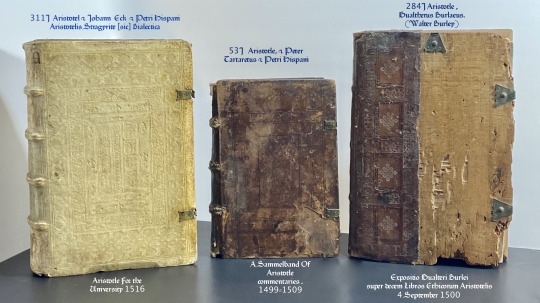
View On WordPress
#Aristotle#Buridan Aristotle#Buridan Common Sense#Buridan Materialism#Dialectics#incunabulum#Joan. Eck#Logic#Medieval Psychology#memory#Peter of Spain#Petrus Hispanus#pkysics#postinkunabel#Semiotics#Tartaretu#thirteenth century#University
0 notes
Text
Walter Burley
284J Aristotle , Gualtherus Burlaeus. (Walter Burley (c. 1275–1344/5 ))
Expositio Gualteri Burlei super decem Libros Ethicorum Aristotelis (Contains the text of Robert Grosseteste’s translation of the Nicomachean Ethics)
Venice: Simon de Luere for Andreas Torresanus, 4 September 1500 $11,500
Folio, 12 1/4 X 8 1/2 in. A8 a6 b-x8 y10.
Second edition after the first of 1481.
This copy is bound…

View On WordPress
#Buridan Agent Intellect Buridan Common Sense Buridan Hylomorphism Buridan Intelligible Species Buridan Intentions Buridan Phantasms Buridan#Buridan Aristotle#Buridan Common Sense#Buridan Materialism#Medieval Psychology#thirteenth century
0 notes
Photo
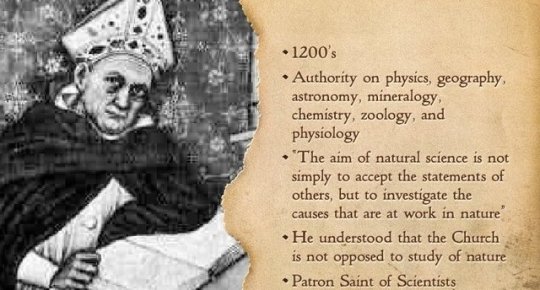
Catholic Physics - Reflections of a Catholic Scientist - Part 101 - Truth Cannot Contradict Truth - Part 3
With Images:
https://www.linkedin.com/pulse/catholic-physics-reflections-scientist-part-101-truth-harold-baines-2/?published=t
SECTION 5: Science Background – The Physics of Motion
5.1 INTRODUCTION
This section is for those students who don’t remember (or perhaps never were taught) elementary physics. I hope to give some qualitative notions of some basic concepts in physics and to do so with a minimum of mathematics, using pictures, animations and links to available explanations on the web. So, dear reader, imagine you’re living in pre-Renaissance Europe, and are listening to those Medieval monks explain what they think about motion, and how it differs from what Aristotle had to say.
5.2 DISTANCE, VELOCITY, ACCELERATION
First, let’s consider distance. I believe all you readers have an intuitive notion of what distance is: you draw a straight line between point A and point B and the length of that line is the distance between points A and B.¹
What is velocity, then? Velocity is a rate, distance per time. (And, to be fussy, velocity has direction; “speed” is the magnitude of velocity; you don’t care what the direction is; velocity is “speed” plus direction.)
Now I ask your pardon, dear reader to bear with me while I inject just a little math to make the concept clear. Suppose it’s four miles to the nearest rest stop on the thruway and you must get there in five minutes (or less–I won’t ask why. How fast do you have to travel or what should your car’s velocity be? Your rate of travel, speed, must be four miles in five minutes, or 4miles/ 5 minutes, or as it would be written conventionally, 4/5 miles/minute; in other words, distance divided by time. Since there are 60 minutes in an hour, a little arithmetic shows you would have to travel 60x (4/5) miles/hour or 48 mph². And here’s an equation (again, pardon)
v= d/t where v is velocity, d is distance and t is time to travel that distance
What is acceleration? It’s also a rate, the change in velocity divided by the corresponding change in time. Let’s turn again to an example with some numbers. Fresh out of grad school I bought a MG TD (red, no less!). The MG was not, to use my grandson’s lingo, “zippy.” From a standing start, it could get to a speed of 42 mph in about 20 seconds (real sports cars take only about 5 seconds to get to 60 mph). This acceleration rate corresponds happily (for nice numbers) to about 1 (m/s)/s or 1 m/s². So we have acceleration, a, given by the gain in velocity over the time, t, it takes to achieve that change:
a = change in v / t
The animation below shows the MG going from standing start to final velocity, 42 mph, in 20 seconds and traveling thereafter at constant velocity of 42 mph. The shots are taken at 4 second intervals starting from 8 s after the start. (Caption for linked image)
Kinetic Energy = (1/2) mass x velocity^2
Potential Energy = mass x g x h= mgh where g is the acceleration due to gravity (9.8 m/s^2), h is the height above the bottom
You can use the play controls, play and pause, at the side of the animation to stop and start the animation; also you can select a button at the bottom to show where the MG is at given times: 8, 12, 16, 20, 24, 28 seconds after start.
Also shown below is a velocity profile at the times after start; the speed is listed above each car image; the arrow length corresponds (roughly) to the velocity: (Caption for linked image)
Velocities at 4 second intervals from 8s to 28 s. Acceleration is 1 m/s^2, to get to 42 mph in 20 s. Acceleration ceases at 20 seconds, so velocity is constant from 20 seconds to 28 seconds.
An easy way to think about constant acceleration is that the distance covered in a given time is average velocity multiplied by the time. The average velocity is just (1/2) (v_beginning + v_end).³
As pointed out in SECTION 3.2, Nicolas Oresme had derived these relations between velocity, distance and acceleration by a graphical analysis, 100 years before Galileo. However, it was Galileo who did the science: confirmed the theory by experiment.
How did Galileo set up an experiment where the motion would be slow enough for him to measure time, distances and speed? Acceleration of falling bodies would be too fast. Here’s the experiment, done in elementary physics lab classes. An inclined plane, as in the illustration below, length L, is set up so that the top end of the plane is a height h above the ground. A ball or cylinder rolls down the plane and you measure distance traveled in given times. Now if the plane were to be vertical (h=L), the ball would fall with an acceleration that of gravity (9.8 m/s²) and that would be too fast. If the plane is flat (h=0), the ball would not roll at all (hey! that’s poetry?). Clearly the acceleration is going to vary as the height h changes. It turns out that the acceleration is proportional to h/L. It will be the same –independent of size or material – for a given shape sliding or rolling down the plane.
Inclined Plane used by Galileo to measure relation between distance, velocity and acceleration (Caption for linked image)
5.3 MOMENTUM
How do objects acquire velocity, that is accelerate? Buridan in the 14th Century had ideas about velocity that anticipated Galileo and Newton centuries later. He said that a moving body had “impetus,” the heavier the body moving at a given velocity, the more impetus it had. If you threw a ball, the motion of your arm gave the ball its impetus. “Impetus” is what we now call “momentum” and define as
momentum = mass x velocity
Mass is what we ordinarily think of as weight, but to be fussy, weight is really mass times the force of gravity. You can think of mass as resistance to change in motion, what would technically be termed “inertia.”
Here’s an example to give you some intuitive notion about momentum: the MG TD referred to above is a very light car, weighing only about 1/2 ton (1000 pounds); a late model Cadillac is much heavier, weighing about two tons. Accordingly, the mass of the Caddy is about four times greater than that of the MG. So, if the MG were traveling at 40 mph and the Caddy at (1/4)x 40 mph = 10 mph, they would have equal momentum (if they were traveling in the same direction–remember, velocity has direction, speed does not). This is illustrated in the animation below. (Caption for linked image)
An important principle of physics is that energy is conserved. What does that mean? It means that energy doesn’t disappear into nowhere, for example:
kinetic energy, energy of motion is lost due to friction, but is converted to the same amount of heat energy;
kinetic energy, energy of motion is lost due to work done, moving the MG up a hill–the work done is equal to the amount of kinetic energy lost; the work done is equal to the gain in potential energy at the end;
chemical energy of the gasoline is converted to kinetic energy less friction losses in the engine and drive shaft.
Accordingly, the energy bank account balances: input (at the beginning) of chemical energy, gasoline in the fuel tank = kinetic energy at the end of the drive, when the fuel tank is empty + energy lost due to friction of the tires with the road, engine and drive shaft friction + work done due to a net change in height level at the end or gain in potential energy.
In Essay 2, we’ll have more to say about energy and the science of energy, “Thermodynamics,” particularly those two important laws: The First and Second Laws of Thermodynamics.
5.6 NOTES
¹Let me add a cautionary note physicswise: if you are traveling between A and B (home and the local fastfood place, let’s say) and you wander around, make side-trips, the distance is still the length of the line between beginning and ending points. If you want to get total mileage traveled, then you have to draw straight lines between each of the intermediate starting and stopping points and add the lengths up.
² Since each hour contains 60 minutes, you would have to go 60 (minutes/hour) x (4/5) (miles/minute) or 60 x (4/5) (miles/hour)= 48 (miles/hour).
³For our example, the distance covered by the accelerating MG between 12 seconds (v_beginning = 25 mph) and 16 seconds (v_end=33mph) is just
(1/2) (25+33) (miles/hour) x(1 hour/ (3600 seconds) x (16-12) seconds or about 56 yards
From a series of articles written by: Bob Kurland - a Catholic Scientist
0 notes